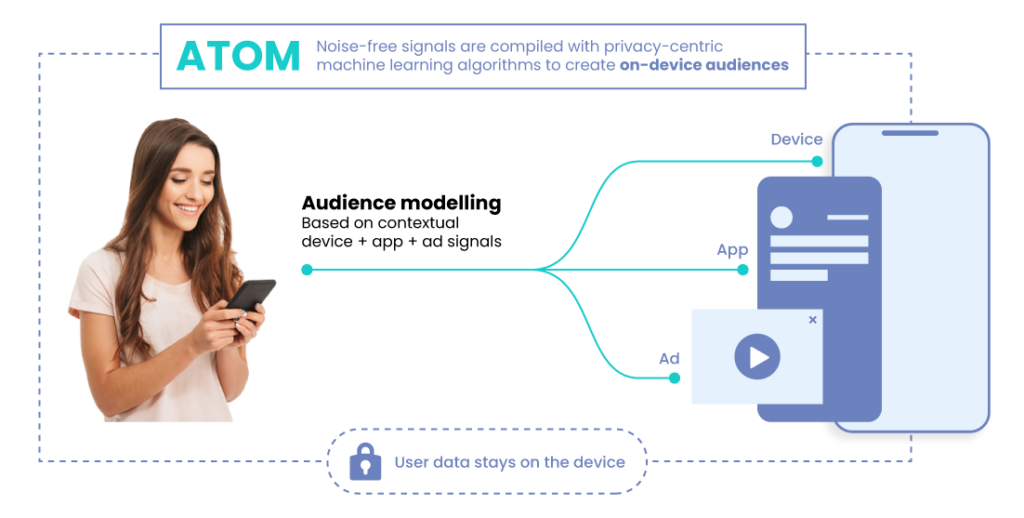When Apple announced the release of iOS 14 and the restrictions around the use of IDFA last year, we were taken aback like the rest of the industry. There was uproar, surprise, and frustration (understandably), but a part of us was also relieved. The intended apocalypse brought to prominence a principle that we have always believed to be the path of least resistance for content consumers, creators, and advertisers — embracing user privacy by design and the need for anonymized targeting.
The internet has always been split between the “anonymous” and “authenticated” versions in one way or another. While the authenticated users will continue to be available to advertisers, scale will be a concern. In fact, with the deprecation of IDFA, advertisers are already seeing a larger share of users without digital identities essential to their targeting KPIs. Most popular identity solutions are based on user consent or authentication, and therefore, only address the smaller pool of users who agree to the silent value exchange of their time, attention, and identity in return for free content.
But what about the anonymized users that are left unaddressed? Anonymized solutions on the other hand are not only privacy-centered but also future-oriented, allowing consumers to enjoy free content while preserving their privacy. Today, we are proud to be the flag bearers for the first-of-its-kind, anonymized targeting solution built for the open advertising ecosystem.
Hey there, ATOM.
ATOM (or Anonymized Targeting on Mobile) is an on-device mobile audience activation technology for digital advertising that enables brands to reach the right audiences on mobile and increase return on ad spend without compromising user privacy. For publishers, ATOM provides a way to monetize their inventory in a secure and privacy-compliant manner.

Instead of first-party data being sent around the ecosystem, ATOM creates audiences directly on the user’s device. These anonymized audiences are built by privacy-centric machine learning models that layer signals including device data, app metadata, and advertisement interactions in order to probabilistically infer behavioral characteristics such as age groups, gender, interests, and more without the need to access personal information such as email address or a mobile device identifier.
How does ATOM work?
Train. Validate. Test. Repeat. The ATOM algorithm is trained to find patterns based on contextual data. For example, a frequently used target component, such as user demographic, is modelled by finding correlations between age or gender and the content context, session duration on a device within a certain time frame, etc.
Once the models are created, they are further trained and tested for improved efficacy using our existing extensive set of behavioral and location audiences that are known today to brand advertisers for their industry leading performance. The models are also deployed and tested in-house on our owned and operated apps, and then shipped in our SDK to our vast network of directly integrated publisher partners and app developers.
How can you get started with anonymous targeting?
Currently in its beta phase, ATOM has built and validated demographic audiences that can be activated on demand by advertisers and publishers alike. Over the next few months, we plan to extend our anonymized audiences to more granular behavioral segments that marketers would like to target. We will be working closely with our advertising partners in the beta program to begin testing anonymized audiences for their existing campaigns, while continuing to improve its performance to match the existing industry benchmarks on the known or addressable set of audiences (that share IDFA).
Switching to cohorts-driven targeting with ATOM
We feel strongly that audiences should not be decoupled from the media. Users’ advertising preferences are an integral part of this. This is one reason why first-party data and cohorts-driven targeting will reign supreme, compared to solutions like shared identities that cross-link data and provide far lesser control to the end consumers. With ATOM, we are building a privacy-first ecosystem by learning from first-party driven targeting successes within the walled gardens, while offering the same efficiency and efficacy by being an open alternative to publishers and advertisers alike.
It’s an incredibly interesting time for the advertising industry, and we are thrilled to present a solution that not only puts user privacy at the forefront, but also enables brands and publishers to achieve their business goals. Apart from Facebook, Google, and Apple, Verve is the only platform that currently supports on-device ad personalization for anonymized users with a privacy-first approach.
Our beta program is now open to all interested partners. So if you are an advertiser looking to secure your campaign budgets and audience addressability, or a publisher looking to de-risk monetization, then we are here to help you.








